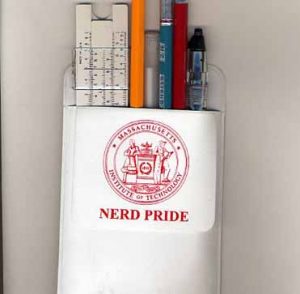 I struggle with how to respond to smart people who preface their questions with “I’m not a techie…†In my smartass days—which I hope are largely behind me—I would have said something snide or rolled my eyes or possibly both. Since I’ve been married to one of these people for the last 34 years, suppressing that immediate response and looking deeper is a wiser strategy.
I struggle with how to respond to smart people who preface their questions with “I’m not a techie…†In my smartass days—which I hope are largely behind me—I would have said something snide or rolled my eyes or possibly both. Since I’ve been married to one of these people for the last 34 years, suppressing that immediate response and looking deeper is a wiser strategy.
We all get that technology suffuses our days. It is a central element of our environment. But we are not as blessed as Marshall McLuhan’s fish. McLuhan once quipped that “I don’t know who discovered water but it wasn’t a fish.†We can’t simply swim in our technology environment and remain oblivious. Our technology environment intrudes. We see something and it feels threatening. That sense of dread limits our ability to navigate smoothly and comfortably.
For those who can see more clearly, it can be hard to parse the feelings of those who cannot see as clearly. To complicate matters further, knowledge of and comfort with the technological environment doesn’t eliminate the sense of dread—it merely relocates it.
There is a pair of questions to be explored to discover where we might go.
- What is it about the approach to technical challenges of non-techies that contributes to their distress and struggles?
- What is it that “techies†do differently that allows them to navigate a dynamic technology environment with comfort?
I think I’ve noticed two things about how smart non-techies approach technology. First, in an odd way, they are too procedural. They seek a precise, step-by-step, recipe for how to accomplish their goal; they are focused on the immediate task at hand. For them the task is what matters and they wish only to know enough technology to execute their task. While this would seem to be a sound strategy, its weakness is that it ignores context; in particular the technological context that exists side-by-side with the business context. The task at hand appears straightforward to the non-techie because they have embedded that task in its business and organizational context. Thinking that the technical task can be reduced to a single recipe assumes that any technology exists on its own; that it has no context.
This is easier to see when you notice that non-techies appear to approach each application or technology as if it were unique. It’s as though each application were a new alien arrival from another universe. By contrast, those who are technologically comfortable view each new application as one new specific creature drawn from a coherent ecosystem. I somethings think of this as seeing “behind the screens.†For those more comfortable in this ecosystem, we have a coherent model of what is going on behind the surface of the screens that dominate our environment.
Techies have learned to see that there are two contexts in play. One for the task at hand and one for the technology ecosystem. What makes this troubling is that acquiring these contexts takes time. You develop a sense for how individual items work within an ecosystem by building a model out of exposure to a long series of case examples. This ties into the notion of digital literacy but isn’t quite the same. That’s a line of thought to be developed over time. My hypothesis is that the path forward starts with helping the non-techie grasp that there is a second context worth being aware of.